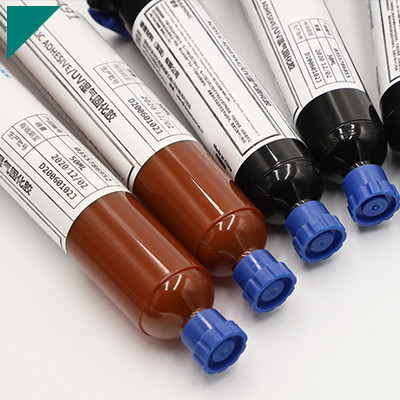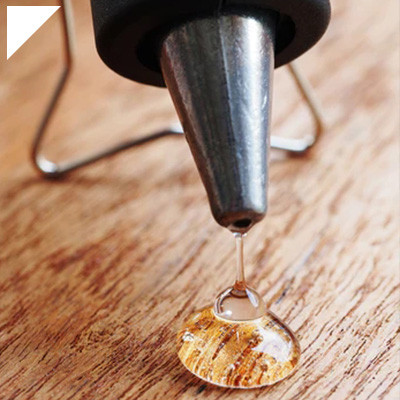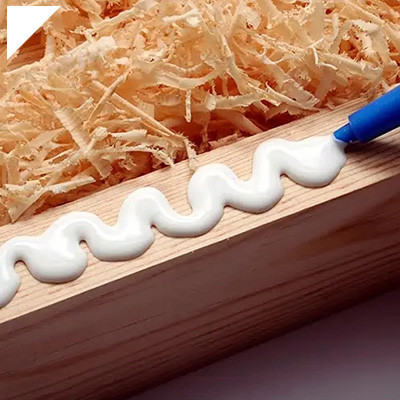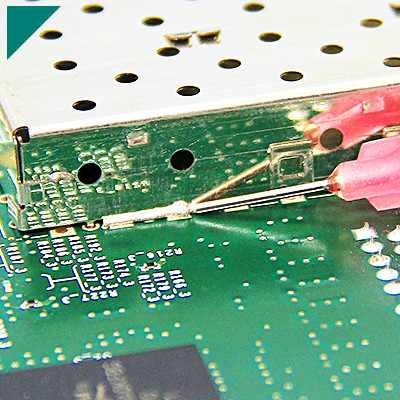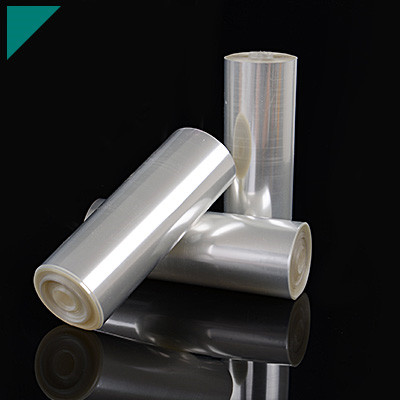What is potting and encapsulation

Potting and encapsulation are crucial in various industries, providing protection and stability to delicate electronic components and devices. These techniques involve enclosing sensitive components within a protective material, shielding them from environmental factors such as moisture, dust, vibration, and mechanical stress. In this category, we delve into the fundamentals of potting and encapsulation, exploring their significance, methodologies, materials used, applications, and more.
Table of Contents
ToggleCrucial understanding for your awareness:
What is potting?
Potting refers to encapsulating or covering an electronic component or device with a protective material, typically a resin or epoxy compound, to shield it from environmental factors such as moisture, dust, vibration, and physical impact. This technique is commonly employed in electronics manufacturing to enhance the reliability and durability of electronic assemblies, particularly those subjected to harsh operating conditions.
The potting process involves several steps. First, the electronic component or assembly to be potted is placed within a mold or fixture that defines the desired shape and size of the final encapsulation. The mold is often made of silicone or metal, depending on the specific application requirements.
Next, the potting material, usually a liquid resin or epoxy compound, is prepared by mixing resin with a hardener in the appropriate ratio. This mixture is poured or injected into the mold, surrounding the electronic component and filling voids or gaps.
After filling the mold, the potting material is allowed to cure or harden, typically through a chemical reaction or exposure to heat. This curing process transforms the liquid resin into a solid, durable encapsulant that protects the enclosed electronics.
Once cured, the encapsulated assembly is removed from the mold, and any excess material may be trimmed or removed to achieve the desired finish. The resulting potting compound forms a protective barrier around the electronic component, sealing it from moisture, dust, and other contaminants while providing mechanical support and insulation.
Potting offers several advantages in electronic design and manufacturing. By encapsulating sensitive components, potting helps prevent corrosion, electrical shorts, and mechanical damage, thereby improving electronic devices’ overall reliability and lifespan. Additionally, potting can enhance thermal conductivity, dissipating heat generated by the enclosed components and contributing to more efficient operation.
Overall, potting is a versatile and effective technique for protecting electronic assemblies. It is an essential process in industries such as automotive, aerospace, telecommunications, and industrial automation, where reliability and durability are paramount.
What is encapsulation?
Encapsulation is a fundamental concept in object-oriented programming (OOP) that involves bundling data and methods that operate on the data into a single unit, known as a class. This unit provides a way to control the access to the data, ensuring that it is accessed and modified in a controlled manner. Encapsulation hides an object’s internal state and only exposes the necessary functionalities, thereby promoting modularity, reusability, and maintainability in software development.
At its core, encapsulation involves two main principles: data hiding and Abstraction. Data hiding refers to the idea that an object’s internal state should not be directly accessible from outside the object. Instead, access to the data is typically mediated through methods or functions provided by the class. This helps prevent unintended modification of the object’s state and enforces a clear separation between the interface and implementation of the class.
On the other hand, Abstraction involves representing an object’s essential features while hiding its complex implementation details. This allows users of the class to interact with it at a higher level of Abstraction, focusing on what the object does rather than how it accomplishes its tasks. Encapsulation enables Abstraction by encapsulating the implementation details within the class, exposing only the necessary interfaces for interacting with the object.
Encapsulating data and methods within a class provides several benefits:
- It improves code maintainability by localizing changes to a single class, reducing the likelihood of unintended side effects in other parts of the program. Second
- Encapsulation promotes code reuse since classes can be easily reused in different parts of the program or other projects without modifying their internal workings.
- Encapsulation enhances code security by preventing unauthorized access to sensitive data and ensuring that data is manipulated only through controlled interfaces.
Encapsulation is a crucial principle in object-oriented programming that involves bundling data and methods into a single unit, controlling access to the data, and promoting modularity, reusability, and maintainability in software development.
How do potting and encapsulation differ?
Potting and encapsulation are standard techniques used in various industries, especially electronics and manufacturing, to protect components and devices from environmental factors such as moisture, shock, vibration, and corrosion. While both methods serve similar purposes, they differ in their application, materials used, and level of protection provided.
Potting involves immersing an electronic component or device in a liquid or semi-liquid compound, such as epoxy resin or silicone, to encase it entirely. This process fills all voids and cavities, sealing the component from external elements. Potting is commonly used for electronic assemblies, circuit boards, and sensitive components like sensors and transformers. It provides excellent protection against moisture, dust, and mechanical stress, enhancing the durability and reliability of the encapsulated device. However, potting can make repairs or modifications challenging due to the permanent sealing of the component.
Encapsulation, conversely, involves coating the component or device with a protective material, forming a thin layer around it. Unlike potting, encapsulation does not fully immerse the component but provides a protective barrier on its surface. This method is suitable for applications where the component needs to remain accessible for maintenance or repair purposes. Encapsulation materials can include epoxy resins, urethanes, silicones, or other specialized coatings tailored to the application’s specific requirements. While encapsulation offers less comprehensive protection than potting, it effectively shields against moisture, chemicals, and mechanical damage.
Potting involves immersing a component in a protective compound, which provides comprehensive protection but limits accessibility for repairs. Encapsulation, conversely, entails coating the component with a protective layer, which offers less extensive protection but allows easier access for maintenance. Both techniques play crucial roles in safeguarding electronic components and devices, and the choice between them depends on factors such as the level of protection required, accessibility needs, and the specific application’s environmental conditions.
What are the primary purposes of potting and encapsulation?
Potting and encapsulation are crucial in various industries, including electronics, automotive, aerospace, and telecommunications. They serve multiple purposes to protect sensitive components, ensure longevity, and enhance performance. Here are the primary purposes of potting and encapsulation:
- Environmental Protection: One of the foremost purposes of potting and encapsulation is to shield electronic components from environmental factors such as moisture, dust, chemicals, and vibrations. These external elements can lead to corrosion, short circuits, or component failure. Potting and encapsulation create a barrier around the components, safeguarding them from these detrimental effects.
- Mechanical Reinforcement: Potting and encapsulation materials often reinforce delicate components, especially in mechanical stress or frequent handling applications. The material acts as a buffer by encapsulating the components, reducing the risk of damage from impacts or mechanical shocks.
- Insulation: Encapsulating electronics in a potting material offers electrical insulation, preventing short circuits or electrical interference. This is particularly crucial in high-voltage applications where maintaining electrical isolation is imperative for safety and proper functioning.
- Thermal Management: Some potting compounds possess excellent thermal conductivity properties. Encapsulating components with these materials helps dissipate heat generated during operation, thus preventing overheating and ensuring optimal performance and longevity of the device or system.
- Improved Reliability and Durability: By effectively protecting components from environmental hazards, mechanical stress, and electrical interference, potting, and encapsulation contribute to the overall reliability and durability of electronic devices. This is especially critical in applications where components are exposed to harsh conditions, or failure could have severe consequences.
- Customization and Aesthetics: Potting and encapsulation materials come in various forms, including liquids, gels, and resins, allowing for customization based on the specific requirements of the application. Additionally, encapsulation can enhance the aesthetics of electronic assemblies by providing a uniform and attractive finish.
Potting and encapsulation play indispensable roles in safeguarding electronic components, enhancing their performance, and prolonging their lifespan in diverse applications across industries. By protecting against environmental, mechanical, and electrical hazards, these processes ensure electronic devices and systems’ reliability, durability, and functionality.
What types of materials are commonly used for potting and encapsulation?
Potting and encapsulation are crucial in various industries, including electronics, automotive, aerospace, and more, where protecting sensitive components from environmental factors such as moisture, shock, vibration, and corrosion is essential. Commonly used materials include epoxies, silicones, urethanes, and acrylics.
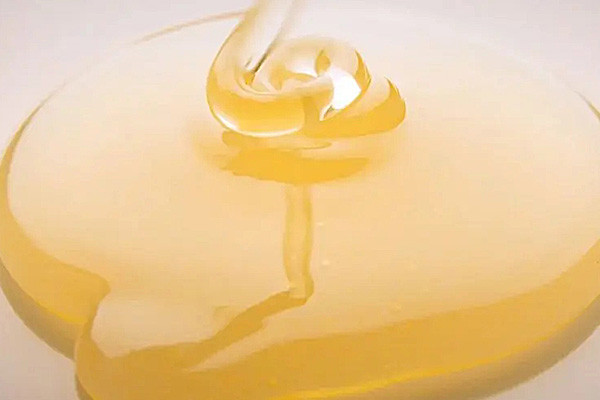
- Epoxiesare thermosetting polymers known for their excellent adhesion, chemical resistance, and mechanical properties. Epoxies provide reasonable protection against moisture and chemicals, making them suitable for demanding applications. They come in different formulations, including rigid, semi-rigid, and flexible types, offering options for various requirements.
- Silicones: Silicones are synthetic polymers with a backbone of alternating silicon and oxygen atoms, providing unique properties such as flexibility, thermal stability, and resistance to moisture, chemicals, and extreme temperatures. Silicone potting materials, such as in automotive and aerospace industries, are commonly used in applications where flexibility and thermal stability are crucial.
- Urethanes: Urethanes resins balance flexibility and toughness, making them suitable for applications where vibration and mechanical stress are concerns. They provide good electrical insulation properties and resistance to environmental factors. Urethanes are often used to encapsulate delicate electronic components and in applications where impact resistance is essential.
- Acrylics: Acrylic resins are known for their fast curing times and excellent electrical properties. They offer good adhesion to various substrates and protect against moisture and environmental contaminants. Acrylics are commonly used in potting and encapsulation applications where quick processing and reliable performance are required.
- Polyurethanes: Polyurethane resins combine the properties of urethanes with the versatility of a wide range of formulations, allowing for the customization of mechanical, thermal, and chemical properties. They provide good adhesion to substrates and offer options for different levels of flexibility and hardness, making them suitable for diverse applications.
When selecting a potting or encapsulation material, factors such as the operating environment, thermal requirements, mechanical stresses, and desired properties like flexibility or rigidity must be considered. Each material has advantages and limitations, and choosing the right one is crucial to ensure encapsulated components’ long-term reliability and performance.
How do environmental factors impact the need for potting and encapsulation?
Environmental factors play a significant role in determining the necessity for potting and encapsulation in various industries, especially those involving sensitive electronic components or delicate machinery. Potting and encapsulation involve sealing electronic components or devices within a protective material to shield them from environmental influences such as moisture, dust, temperature variations, mechanical shocks, and chemical exposure. The impact of environmental factors on the need for potting and encapsulation can be understood through several key aspects:
- Moisture and Humidity: High moisture and humidity levels can lead to corrosion, short circuits, and electrical leakage in electronic components. Potting and encapsulation materials provide a barrier against moisture ingress, ensuring the longevity and reliability of the components, particularly in applications exposed to outdoor or harsh environments.
- Temperature Variations: Extreme temperatures can cause the expansion and contraction of materials, leading to stress on electronic components and potential failure. Potting and encapsulation materials with thermal stability help maintain the integrity of components by providing insulation against temperature fluctuations, preventing thermal cycling-induced damage.
- Mechanical Shocks and Vibrations: Equipment in automotive, aerospace, and military industries are often subjected to mechanical shocks and vibrations during operation or transportation. Potting and encapsulation materials with shock-absorbing properties act as cushions, protecting delicate components from physical damage and ensuring reliable performance under rugged conditions.
- Chemical Exposure: Exposure to chemicals, solvents, fuels, and other corrosive substances can degrade the performance and lifespan of electronic components. Potting and encapsulating materials with chemical resistance properties are a barrier, safeguarding components from corrosive agents and maintaining their functionality in chemically aggressive environments.
- Dust and Contaminants: Dust, dirt, and other contaminants in industrial or outdoor environments can infiltrate electronic devices, leading to malfunctions or failures. Encapsulation seals out these contaminants, maintaining the cleanliness and operational efficiency of the components, particularly in applications where cleanliness is crucial, such as medical devices or semiconductor manufacturing.
Environmental factors significantly influence the need for potting and encapsulation by posing various threats to the reliability and performance of electronic components. Proper selection and application of potting and encapsulation materials help mitigate these risks, ensuring sensitive equipment’s durability, longevity, and functionality in diverse operating environments.
What are the steps involved in the potting process?
The potting process, commonly used in electronics manufacturing, involves encapsulating electronic components within a protective casing or potting compound to shield them from environmental factors such as moisture, vibration, and thermal shock. Here are the steps involved in the potting process:
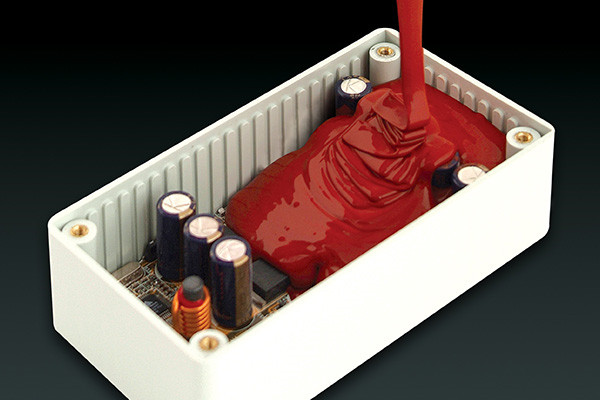
- Component Selection: Choose suitable electronic components and circuitry for the intended application. Consider factors such as size, shape, and functionality.
- Design Considerations: Design the housing or enclosure for the components, considering factors such as thermal management, ingress protection (IP) rating, and accessibility for maintenance or repair.
- Material Selection: Select an appropriate potting compound based on the application’s specific requirements. Consider thermal conductivity, flexibility, chemical resistance, and curing time.
- Preparation: Clean the components and the housing thoroughly to remove any contaminants that could affect the adhesion or performance of the potting compound.
- Mixing: Prepare the potting compound according to the manufacturer’s instructions. This often involves mixing two or more components in the correct proportions to initiate the curing process.
- Potting: Pour or inject the mixed potting compound into the housing or enclosure, ensuring that all components are adequately covered and supported. Use techniques such as vacuum potting or pressure potting to remove air bubbles and ensure complete coverage.
- Curing: The potting compound can cure or harden according to the manufacturer’s specifications. This may involve exposing the assembly to heat, UV light, or ambient conditions for a specified period.
- Post-Curing Inspection: Once the potting compound has cured, inspect the assembly for any defects or inconsistencies. Check for proper adhesion, coverage, and signs of air pockets or voids.
- Testing: Conduct functional and environmental testing to ensure the potted assembly meets the required performance specifications. This may include electrical conductivity, thermal conductivity, moisture resistance, and mechanical stability tests.
- Finishing: Clean any excess potting compound from the exterior of the assembly and apply any necessary labels or markings for identification and traceability.
- Packaging: Package the potted assemblies securely for storage, transportation, or installation, protecting them from any potential damage during handling or transit.
By following these steps, manufacturers can effectively pot electronic components to provide reliable protection against harsh environmental conditions, ensuring the longevity and performance of the final product.
What are the steps involved in the encapsulation process?
Encapsulation is a fundamental concept in object-oriented programming (OOP) that promotes data hiding and abstraction. It involves bundling data and methods that operate on that data within a single unit, known as a class. Encapsulation provides several benefits, including improved code organization, data security, and flexibility. The process of encapsulation typically involves the following steps:
- Identify Data and Methods: The first step in encapsulation is identifying the relevant data and methods that belong together within a cohesive unit. Data represents the state of an object, while methods define the behavior or operations that can be performed on that data.
- Define Class: Once the data and methods are identified, they are grouped together within a class definition. The class serves as a blueprint for creating objects, specifying the structure and behavior that all instances of the class will exhibit.
- Access Control: Encapsulation involves controlling access to the internal state of an object. This is achieved through access modifiers such as private, public, and protected. Private members are accessible only within the class itself, while public members can be accessed from outside the class. Protected members are accessible within the class and its subclasses.
- Encapsulate Data: Data members within the class are typically declared as private to restrict direct access from outside the class. Instead, access to these data members is provided through public methods, known as getter and setter methods, which encapsulate the data by providing controlled access points.
- Define Getter and Setter Methods: Getter methods allow external code to retrieve the value of a private data member, while setter methods enable external code to modify the value of a private data member. These methods enforce validation and encapsulate the internal representation of the data.
- Encapsulate Methods: Methods that operate on the encapsulated data are also defined within the class. These methods manipulate the internal state of the object while maintaining encapsulation by only being accessible through the public interface of the class.
What industries typically utilize potting and encapsulation techniques?
- What are the advantages of potting and encapsulation?
- What are the disadvantages of potting and encapsulation?
- How does potting enhance the durability of electronic components?
- How does encapsulation protect electronic components from moisture and dust?
- Can potting and encapsulation be performed on sensitive electronic circuits?
- Are there specialized techniques for potting and encapsulating complex electronic assemblies?
- What considerations should be taken into account when selecting potting and encapsulation materials?
- How does potting and encapsulation contribute to the reliability of electronic devices?
- Are there specific standards or regulations governing potting and encapsulation?
- Can potting and encapsulation be reversed or removed?
- What advancements are being made in the field of potting and encapsulation technology?
Conclusion: Potting and encapsulation serve as indispensable methods for safeguarding electronic components and devices from a myriad of environmental hazards. By encapsulating sensitive elements within protective materials, these techniques ensure enhanced durability, reliability, and longevity of electronic assemblies across various industries. Understanding the principles, materials, processes, and applications of potting and encapsulation is paramount for engineers and professionals engaged in electronics manufacturing and design. As technology continues to evolve, so too will the methodologies and materials employed in potting and encapsulation, driving innovation and further enhancing the protection of electronic systems.

About DeepMaterial
DeepMaterial is a trusted supplier of encapsulant materials that are used in electronics manufacturing worldwide. From chip on board encapsulants such as glob top material to conformal coatings, underfills, low pressure molding, and potting solutions, DeepMaterial offers a full range of circuit board protection materials that effectively protect circuit boards while help reduce costs. More…Deepmaterial is a the manufacturer of epoxy adhesives including hardeners, metalbond, and metal filled resins. Structural, toughened medium viscosity, and non-sag adhesives are also offered. Some adhesives are resistant to thermal shock, chemical, vibration dampening, and impact. Suitable for metals, plastics, wood, and ceramics. Serves electronics, aerospace, automotive, tooling, marine, and construction industries. REACH and RoHS compliant. FDA approved. UL listed. Meets military specifications. We are the one of best adhesive manufacturers in China.
Blogs & News
Potting compounds are at the frontline of electronics assembly, delivering effective protection in challenging environmental conditions while improving mechanical strength and offering high electric insulation. Used within a variety of industries, electrical potting compounds are found within a broad range of consumer electronics, as well as used in applications across the automotive, aerospace, and other industries where electronic assemblies are prevalent.

The Unsung Guardian: Why Silicone Potting Compound is Widely Used in the Electronics Industry
The Unsung Guardian: Why Silicone Potting Compound is Widely Used in the Electronics Industry In the intricate, invisible world that powers our modern lives—from
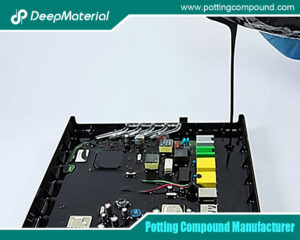
The Development Trend and Future Prospects of Electrical Potting Compound in the Glue Industry
The Development Trend and Future Prospects of Electrical Potting Compound in the Glue Industry In the intricate ecosystem of the adhesive and sealant industry,

The Conformal Coating for PCB Market Has Entered an Explosive Period: Key Drivers and Reports Detailed
The Conformal Coating for PCB Market Has Entered an Explosive Period: Key Drivers and Reports Detailed A Silent Guardian’s Moment in the Spotlight In

How Does Epoxy Encapsulated LED Work?
How Does Epoxy Encapsulated LED Work? The Transparent Guardian of Light In a world illuminated by Light Emitting Diodes (LEDs)—from the subtle indicator

Which Glues Are Suitable for Encapsulation of Electronic Products?
Which Glues Are Suitable for Encapsulation of Electronic Products? In the rapidly evolving world of electronics, protecting sensitive components from environmental hazards is crucial

What Are the Design Standards for the Glass Transition Temperature (Tg) and Tensile Modulus of Automotive Electronic Encapsulants Adhesives?
What Are the Design Standards for the Glass Transition Temperature (Tg) and Tensile Modulus of Automotive Electronic Encapsulants Adhesives? In the automotive industry, electronic



